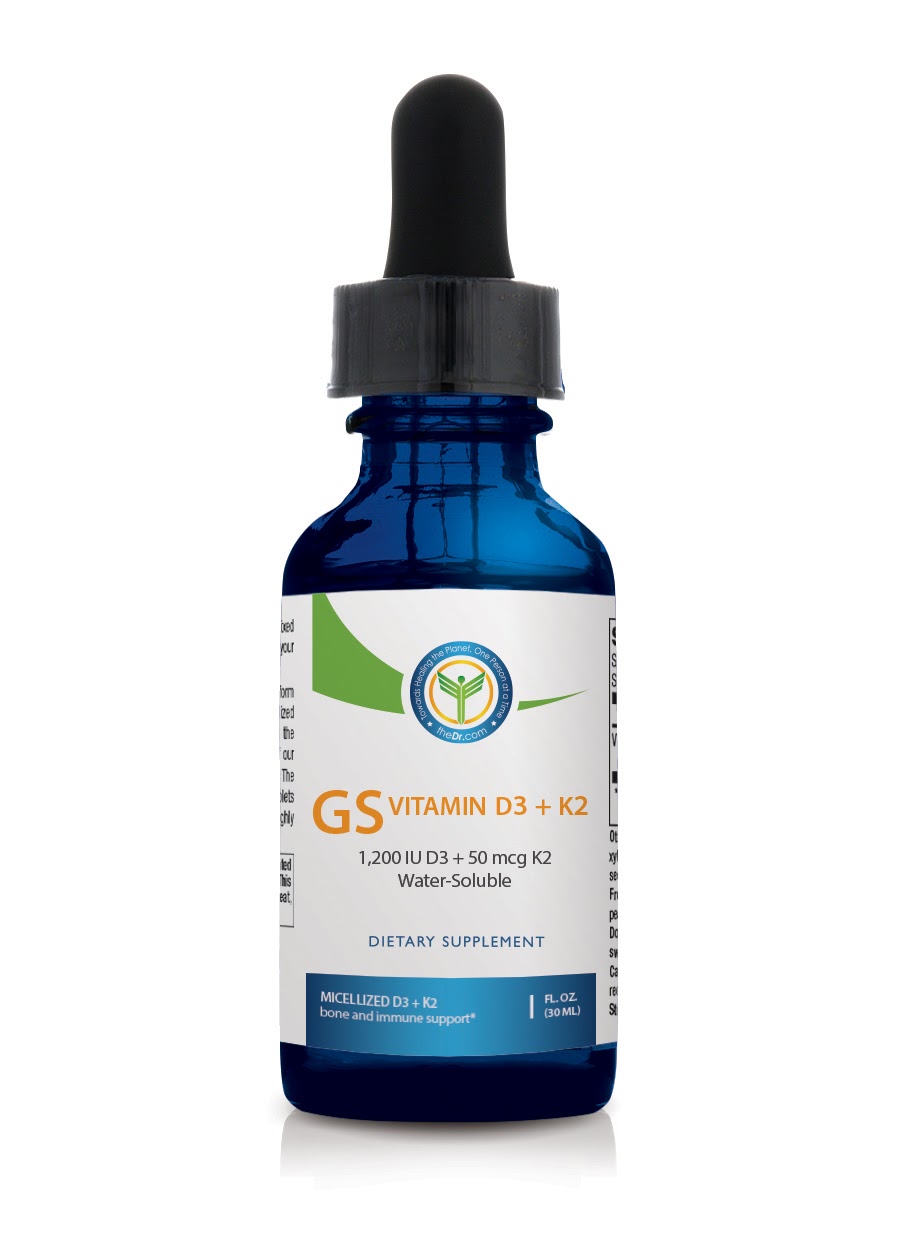

Functional Medicine

Functional Medicine
Vitamin D and Your Immune System
Vitamin D and your immune system
Without exception, every single cell in your body requires vitamin D to function properly, helping to keep your immune system strong. Unfortunately, most people are deficient in vitamin D, and it puts their health at greater risk for a number of problems beyond their bones.
Vitamin D is best known for its role in calcium and bone metabolism, but emerging research indicates that low levels of vitamin D may be associated with increased risk of some cancers, type 2 diabetes, multiple sclerosis, cardiovascular disease, rheumatoid arthritis, depression, Alzheimer’s disease, infections, preeclampsia, cesarean deliveries and neurocognitive dysfunction.
Do you exhibit any signs of a possible vitamin D deficiency?
- Fatigue
- Depression
- Muscle, bone, or back pain
- Brain fog
- GI trouble
- Lowered immunity and slow wound healing
There are vitamin D receptor sites in each of your cells that act like catcher’s mitts. The way your hormones get into you is like a matching game — the estrogen hormone can only go into an estrogen receptor site. Testosterone goes into a testosterone receptor site. Thyroid hormone goes into a thyroid receptor site. They won’t go into other’s receptor sites. If there’s no receptor site for testosterone on your eyeball, testosterone has no effect on your eyeball. When the blood goes by there, testosterone in the blood just keeps going until it finds a catcher’s mitt to go into.
There are two important substances for which there are receptor sites on every cell of your body, which means every cell needs these two critical substances.
One is the thyroid hormone because the thyroid hormone is the thermostat that controls the temperature inside every cell.
The other important receptor on every cell of your body is vitamin D. You don’t want OK levels of vitamin D — you want optimal levels of vitamin D. That’s approximately 50 to 75 nanograms per milliliter.
Promising research suggests vitamin D may be more effective than the flu vaccine
Each year a new flu vaccine is formulated, and every time it’s a guessing game as to how effective it will be. Every year the Centers for Disease Control and Prevention (CDC) urges people (especially the most vulnerable in society) to get their flu vaccine. But how effective is it, and are there more effective treatments?
Until the flu hits, it is hard to know whether that flu shot will be highly effective or completely miss its mark. It’s estimated that each year 5-20% of Americans catch the flu. The 2017-18 flu season saw its worst in four decades with approximately 80,000 deaths related to the flu. So, while influenza is common, it can have very serious consequences.
People with low levels of vitamin D report significantly more colds and flu. Taking supplements can cut your risk of respiratory infections in HALF! In fact, for people who were deficient in vitamin D, boosting their levels had a significantly greater impact on flu prevention. One study showed that for that population, it was 10 times more effective taking supplementation than taking the flu vaccine.
Vitamin D levels change throughout the seasons
During the winter months your Vitamin D levels naturally plummet due to less sunlight hours. Vitamin D helps to keep your immune system strong, and it is needed during those difficult winter months.
But even in summertime, for people who live further north, they may not be getting enough vitamin D during their sunlight hours.
We also see more problems in the later seasons of life with getting the appropriate levels of vitamin D, which can be so critical for preventing respiratory illnesses, or minimizing injuries due to falls. This could be due to malabsorption problems, or they may take medications that block vitamin D from being fully utilized.
Vitamin D toxicity
More often than not, we are worried about someone not getting enough vitamin D because it is so common. However, you can also have problems if you get too much. This does not happen through diet or sunlight. It is possible to get vitamin D toxicity if you take megadoses for extended periods of time when it is not needed.
Symptoms of vitamin D toxicity
- Nausea
- Vomiting
- Lack of appetite
- Constipation
- Weakness
- Weight loss
- Increased urination
- Increased blood pressure
- Cardiac arrhythmia
- Palpitations
- Kidney stones
Testing for vitamin D deficiency (or toxicity)
The two best times to take a Vitamin D Blood Spot Test is spring and summer.
You may think, “Why would I need one in summer? That’s when it is sunny and people are out and about.” If you live in certain geographical areas, despite the beautiful weather, you may still not be getting enough vitamin D.
Over the winter months, we lose a lot of sunlight hours and are outdoors less often typically as well. Taking a blood test in spring is a great indication of whether or not we are consistently getting enough Vitamin D.
It is easy to test your levels. We mail you a “do-it-yourself” Vitamin D at Home Blood Test. You do a little finger prick to attain a small blood spot. That gets sent off to the lab. This is the only finger prick test that I know of that looks at all three markers of Vitamin D, instead of just one.
25-Hydroxyvitamin D Total – This is known for its role in bone health and calcium absorption. It also appears to affect immune function, neurodegenerative and cardiovascular issues, and other conditions.
25-Hydroxyvitamin D2 – This is the form obtained through vegetable diet sources.
25-Hydroxyvitamin D3 – This is obtained from animal diet sources and through sun exposure.
Test to see if your levels are already low. This is a common deficiency, and one easily corrected through proper supplementation.
GS Vitamin D3 Plus K2 Drops
If you have a vitamin D deficiency, many people find the combination of vitamin D3 with K2 helps. Vitamin D helps your body to absorb calcium, and Vitamin K2 helps to direct it into the bones. They each offer their own benefits, as well as work in harmony with each other to get the job done.
You can find both GS Vitamin D3 and GS Vitamin D3 + K2 on our website. GS Vitamin D3 + K2 is a soy-free, natural vitamin D3 and vitamin K2 in a water-soluble micellized form. Micellization greatly increases the solubility, absorption and bioavailability over oil or emulsified forms.
This formula includes the patented vitaMK7, a natural vitamin K2 (as MK7) which supports enhanced utilization of calcium in the bloodstream. VitaMK7® is shown in human clinical studies to increase osteocalcin (calcium-binding protein) levels, enhancing your body’s ability to utilize calcium in the bloodstream. It is also shown to prevent bone loss and promote bone integrity while significantly reducing the incidence of arterial calcification, promoting optimal cardiovascular function. An in-vitro study shows that vitaMK7® inhibits the production of PGE-2, a prostaglandin that acts as a potent stimulator of bone loss.
“What are optimal levels of vitamin D?”
A child’s immune system is fully developed between the ages of two and three. Then it’s really ready to go, and it’s working. We know that a vitamin D level between 50 and 75 nanograms per milliliter (ng/mL) is the ideal range to reduce the risk of developing autoimmune disease or arresting autoimmune disease.
Some doctors go higher than that, but I think 50 to 75 ng/mL is a safe zone to be in. While dosing is different for a child than an adult, the range of 50 – 75 ng/mL is the same level of concentration you are seeking in your body. It just takes a much smaller amount to reach that range for a child.
What are ways to increase vitamin D levels in the body?
There are three concepts here.
1. If you’re healing the gut, you need to take a capsule, so that it gets down to the gut for intestinal permeability. That’s why in our GS Support Packets, there are 22 different nutrients. It’s six pills in one pack, but it’s one pack a day. And its 22 nutrients all that are focused on healing intestinal permeability.
You have to stop throwing gasoline on the fire. You can’t keep eating Ding Dongs, and then take the GS Support Packets and think you’re going to be fine, right? You get all these different nutrients for that pleiotropic approach when you take the GS Support Packets. There are 5,000 units of vitamin D capsule in that pack. That’s the first way you get vitamin D.
2. The second way is the drops, and that’s called micellized vitamin D. The benefit of micellized is it is absorbed right in the mouth immediately. When you take micellized vitamin D, you increase your blood values five times higher than taking the same dosing with a capsule. If you want to get vitamin D to the gut, you take the capsule. If you want vitamin D to get throughout your entire body, you take the micellized vitamin D.
3. The third way is a little bit of exposure to the sun every day. Exposing your arms and legs to the sun for about 15 minutes helps tremendously in stimulating your body to produce vitamin D. Between 10:00 and 2:00 is great for where you live year-round. Anywhere north of the imaginary line between San Francisco, CA and Atlanta, GA, doesn’t get enough vitamin D access from October to April.
Now, for those of you that are sun sensitive, there is an herbal product that we’ve begun to use; it’s called Sun Protect, and it’s with Sunhorse Energy. With Sun Protect, you take one capsule, and you don’t sunburn. It’s just remarkable what we’re seeing with that product. You can go out in the sun, get your 15 minutes of walking every day, and you won’t get red. You’ll know that you’re triggering vitamin D production, but you’re not getting the UVC damage that comes with sun.
Remember that while your body was not designed to hide indoors, you still need protection from overexposure. Odds are if you’re hiking, biking, swimming or camping, you do not stop after 15 minutes. So get added protection with sunscreen.
Those are the three ways that I’d recommend to help you get enough vitamin D.
Vitamin D plays an important part in the innate antimicrobial response. When your body does not get a sufficient (and appropriate) amount, implications for how your immune system functions suggest an increased susceptibility to infections and an increased risk for autoimmunity. Supplementing with Vitamin D is one of the simplest ways you can support your immune system, yet the benefits are far-reaching.
REFERENCES
theDr.com. (n.d.) Vitamin D and your immune system. https://thedr.com/vitamin-d-and-your-immune-system/


 By
By


